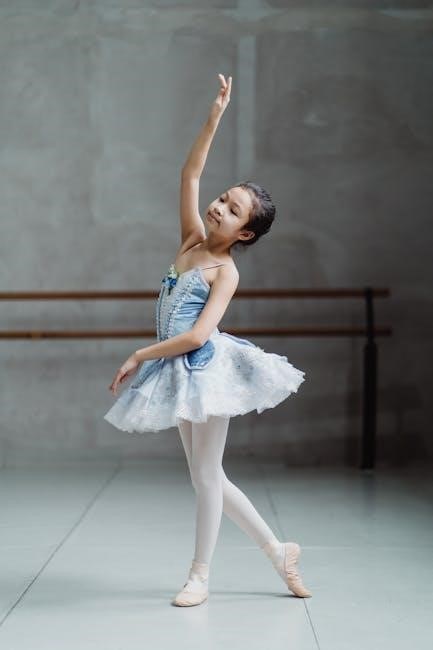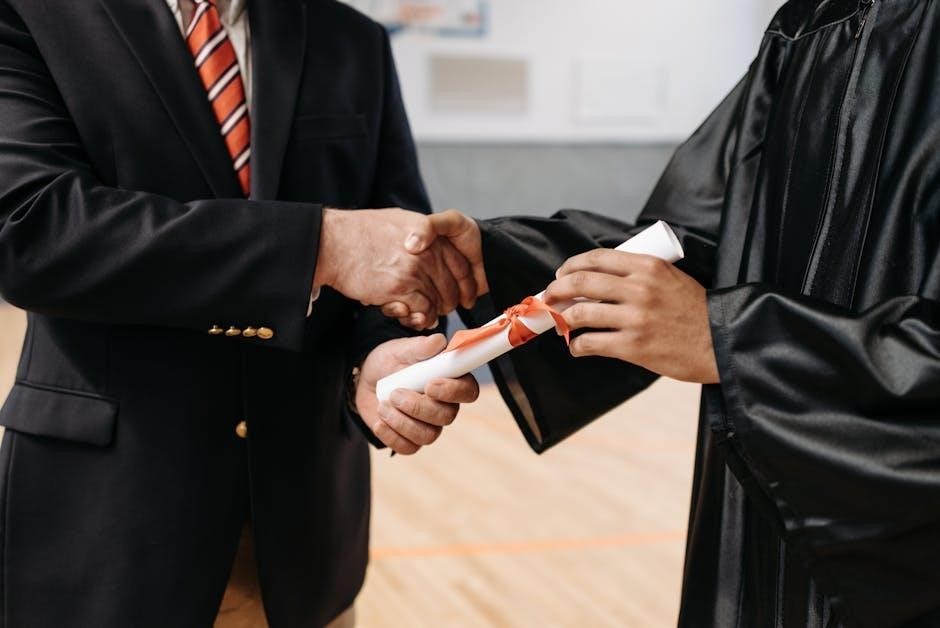
Neuromuscular re-education (NMR) is a therapeutic approach aimed at restoring natural movement patterns and mind-body connection. It addresses impairments, enhances joint biomechanics, and reduces pain through targeted exercises and techniques like PNF and sensorimotor training, guided by physical therapists to optimize recovery and functional outcomes.
1.1 Definition and Purpose
Neuromuscular re-education (NMR) is a therapeutic approach designed to restore normal movement patterns, muscle function, and mind-body connection. It aims to address impairments caused by injury, disease, or disability, optimizing joint biomechanics and reducing pain. Through targeted exercises, NMR enhances sensorimotor control, strength, and flexibility. The purpose is to improve functional abilities, enabling individuals to perform daily activities with greater ease and efficiency. Physical therapists guide patients in relearning proper movement strategies, fostering recovery and improving overall physical performance. This method is foundational in rehabilitation, focusing on neuroplasticity and patient-centered outcomes.
1.2 Importance in Physical Therapy
Neuromuscular re-education is crucial in physical therapy for restoring functional movement and addressing movement dysfunctions. It enhances recovery by improving muscle activation, coordination, and joint stability. By focusing on sensorimotor control and neuroplasticity, NMR helps patients regain lost abilities and reduce pain. This approach is particularly valuable for individuals with injuries, chronic conditions, or neurological disorders. Its patient-centered nature allows for tailored interventions, making it a cornerstone in rehabilitation and injury prevention strategies.
Key Components of Neuromuscular Re-Education Exercises
Neuromuscular re-education exercises focus on functional strengthening, stretching, balance training, and sensorimotor control. These components aim to restore efficient movement patterns and improve overall physical function and coordination.
2.1 Functional Strengthening
Functional strengthening is a cornerstone of neuromuscular re-education, focusing on exercises that mimic daily activities and sports-specific movements. By targeting specific muscle groups, it enhances muscle endurance, power, and coordination. These exercises are designed to improve joint stability and restore efficient movement patterns. Progression is tailored to the patient’s recovery stage, ensuring safe and effective rebuilding of strength. The goal is to empower individuals with the ability to perform tasks effortlessly, reducing the risk of further injury and promoting long-term mobility.
2.2 Stretching and Flexibility
Stretching and flexibility exercises are essential for restoring range of motion and reducing muscle stiffness. These exercises target tight muscles and connective tissues, improving joint mobility. By incorporating static, dynamic, and proprioceptive stretching techniques, patients can enhance flexibility and reduce pain. Physical therapists often combine stretching with strengthening exercises to promote balanced movement patterns. Regular flexibility training also supports long-term mobility and prevents future injuries, making it a vital component of neuromuscular re-education programs. This approach ensures optimal recovery and functional independence.
2.3 Balance and Coordination Training
Balance and coordination training focuses on improving proprioception and stability. Exercises like single-leg stands, wobble boards, and dynamic movements enhance neuromuscular control. These activities help restore the body’s ability to maintain posture and react to changes in equilibrium. By integrating sensory feedback, patients develop better motor strategies, reducing the risk of falls. Physical therapists often incorporate progressive challenges to refine coordination, ensuring safe and effective functional outcomes. This training is crucial for rebuilding independence in daily activities and sports performance.
2.4 Sensorimotor Control
Sensorimotor control is a critical component targeting the integration of sensory input and motor responses. Techniques like joint repositioning and tactile cues enhance proprioception, improving the body’s ability to sense and respond to movement. Exercises focus on restoring accuracy in muscle activation, essential for precise and efficient motion. By refining sensorimotor skills, patients achieve better movement quality, reducing compensation patterns and promoting long-term functional recovery. This training is vital for restoring natural movement and preventing recurrence of injury or dysfunction.

Assessment in Neuromuscular Re-Education
Assessment in neuromuscular re-education involves evaluating muscle strength, joint range of motion, balance, coordination, and proprioception. Physiotherapists identify impairments and movement dysfunctions to guide treatment.
3.1 Identifying Impairments and Movement Dysfunctions
Identifying impairments and movement dysfunctions is crucial in neuromuscular re-education. Physiotherapists assess muscle weakness, limited joint mobility, poor balance, and coordination issues. They analyze movement patterns to detect deviations from normal function. This step ensures personalized treatment plans targeting specific deficits. By pinpointing these impairments, therapists can address the root causes of dysfunction, fostering effective recovery and functional improvement; Accurate identification is key to designing interventions that restore optimal movement and reduce pain.
3.2 Evaluation of Muscle Strength and Joint Range of Motion
Evaluating muscle strength and joint range of motion is essential in neuromuscular re-education. Manual muscle testing assesses strength, identifying imbalances that affect movement. Joint range is measured using tools like goniometers to detect limitations. These assessments help create targeted exercises to restore function and prevent injury. By addressing specific deficits, therapists promote optimal movement patterns and overall recovery. This step ensures interventions are personalized and effective, focusing on the patient’s unique needs.
Techniques and Exercises
Neuromuscular re-education incorporates techniques like PNF, dynamic training, and low-load exercises to restore movement and function. These exercises focus on improving strength, flexibility, and motor control.
4.1 Proprioceptive Neuromuscular Facilitation (PNF)
PNF is a cornerstone in neuromuscular re-education, utilizing spiral and diagonal movement patterns combined with manual pressure and resistance to enhance muscle contractions. This technique, developed by the Bobaths, targets neuromuscular coordination and flexibility. It involves stretching and strengthening exercises that improve joint mobility and sensorimotor control, fostering functional recovery. PNF’s effectiveness lies in its ability to activate specific muscle groups, promoting balanced movement and reducing compensatory patterns, making it integral to physical therapy programs aimed at restoring optimal motor function and reducing pain.
4.2 Dynamic Neuromuscular Training
Dynamic neuromuscular training focuses on improving strength, coordination, and balance through active movements. It often involves group sessions supervised by a physical therapist, incorporating warm-ups, circuit programs, and cool-downs. This approach enhances neuromuscular control and functional recovery, particularly in orthopedic and outpatient settings. By integrating dynamic exercises, it addresses movement dysfunctions and promotes efficient, pain-free motion, making it a versatile tool in physical therapy for diverse patient needs and recovery stages.
Low-load and repetition exercises are essential in neuromuscular reeducation, focusing on controlled movements to enhance strength and endurance without excessive strain. These exercises emphasize high repetition, often in water or gravity-eliminated positions, to improve joint mobility and reduce muscle fatigue. They are particularly effective for patients with chronic conditions or those in early recovery stages, promoting gradual and sustainable progress in motor control and functional abilities, tailored to individual needs and progress levels. Therapy progression involves tailoring exercises to patient needs, ensuring gradual improvement in strength, flexibility, and coordination. Outcomes are measured by functional recovery and pain reduction, optimizing quality of life through personalized care and evidence-based techniques, ensuring sustainable results and independence. Custom treatment plans are tailored to address individual needs, focusing on specific impairments and goals. Patient-centered approaches emphasize collaboration between therapists and patients, ensuring exercises align with personal objectives. Techniques like PNF and sensorimotor training are integrated to enhance recovery. Progress is continuously monitored, adjusting plans to optimize outcomes. This personalized method fosters empowerment, improving adherence and overall results, making therapy more effective and meaningful for each patient. Success in neuromuscular re-education is measured through improvements in muscle strength, joint range of motion, balance, and coordination. Functional recovery is assessed by the patient’s ability to perform daily activities and achieve personalized goals. Therapists use standardized tests and patient feedback to evaluate progress. Outcomes are documented to ensure therapy effectiveness and guide further interventions, focusing on enhancing quality of life and restoring optimal movement patterns. This data-driven approach ensures tailored and impactful care. Neuromuscular re-education plays a key role in orthopedic therapy by addressing movement dysfunctions and improving joint mechanics. It enhances recovery in outpatient settings through targeted exercises, restoring functionality and reducing pain, while promoting efficient movement patterns. Neuromuscular re-education is crucial in outpatient orthopedic therapy for addressing movement dysfunctions. It focuses on restoring efficient movement patterns, improving joint mechanics, and enhancing muscle coordination. Techniques like PNF, dynamic training, and sensorimotor exercises are often used. Physical therapists guide patients through personalized programs to correct impairments and reduce pain, promoting functional recovery. This approach ensures patients regain mobility and strength in a structured, outpatient environment, tailored to their specific needs and goals. Technology and biofeedback enhance neuromuscular re-education by providing real-time feedback on muscle activity and movement patterns. Tools like EMG sensors and wearable devices optimize recovery and engagement. Biofeedback in exercise programs enhances patient awareness of muscle activity, posture, and movement patterns. Techniques like EMG biofeedback provide real-time data on muscle engagement, helping patients learn optimal activation and relaxation. This technology is particularly beneficial for individuals with neuromuscular impairments, such as stroke survivors or those with chronic pain, by improving motor control and reducing compensation. Regular use of biofeedback in therapy accelerates functional recovery and ensures exercises are performed effectively and safely. Advanced therapy techniques in neuromuscular re-education incorporate cutting-edge methods to optimize recovery. Magnetic stimulation and virtual reality (VR) are increasingly used to enhance motor learning and neuroplasticity. These technologies create immersive environments for patients to practice movements, improving coordination and strength. Additionally, low-load exercises combined with biofeedback provide precise feedback, enabling patients to refine their movement patterns. Such innovative approaches accelerate functional recovery and address complex neuromuscular impairments effectively, making them invaluable in modern rehabilitation practices. Neuromuscular re-education is highly effective in stroke rehabilitation, improving motor function and coordination. Case studies demonstrate its success in restoring movement in central nervous system disorders, enhancing recovery. Neuromuscular re-education significantly benefits stroke survivors by restoring motor control and coordination. Techniques like PNF and sensorimotor training enhance recovery, improving functional movements. In central nervous system disorders, targeted exercises promote neuroplasticity, aiding patients in regaining independence. Case studies highlight improved mobility and reduced spasticity, demonstrating the effectiveness of NMR in neurological rehabilitation. These interventions are tailored to individual needs, fostering meaningful recovery and quality of life improvements.4.3 Low-Load and Repetition Exercises
Therapy Progression and Outcomes
5.1 Custom Treatment Plans and Patient-Centered Approaches
5.2 Measuring Success and Functional Recovery

Role of Neuromuscular Re-Education in Orthopedic Physical Therapy
6.1 Addressing Movement Dysfunctions in Outpatient Settings

Incorporating Technology and Biofeedback
7.1 Use of Biofeedback in Exercise Programs
7.2 Advanced Therapy Techniques for Enhanced Recovery

Case Studies and Clinical Applications
8.1 Examples in Stroke Rehabilitation and Central Nervous System Disorders